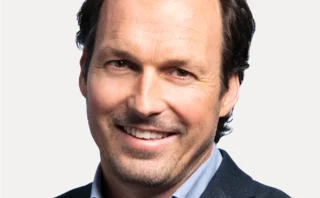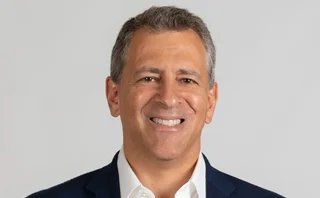

Energy Risk Commodity Rankings: Uncertain times
The winners of Energy Risk’s Commodity Rankings overcame some tumultuous times in 2019, learning lessons that are certainly required in today’s volatile environment
Click here to view the full tables
The recent unprecedented volatility in oil prices tested not only the risk systems and controls of energy trading firms, but the entire risk ecosystem of the commodities space. Firms best placed to ride out the uncertainties of this year are likely to be those that heeded the lessons of the relatively turbulent 2019.
While last year now seems tame in comparison to the eye-watering volatility of the commodities complex so far this year, 2019 was a very uncertain year for global financial markets and the commodities complex in particular. There were, however, opportunities to hedge at favourable price levels, something that producers in many commodity markets seized. The latest Energy Risk Commodity Rankings shows which brokers and dealers were considered the most successful at operating in the commodity derivatives markets, conducting or facilitating risk management strategies.
The survey ran between November 18, 2019 and January 10, 2020, receiving 1,050 valid responses from active commodity market participants. It continued to reflect recent events in the global commodity markets, with precious metals specialist UBS topping the overall dealer category in a year when interest in gold as a safe haven investment spiked. Toronto-Dominion (TD) Bank broke into the top 10 best overall dealer category in second place and was also ranked top base metals dealer and number three precious metals dealer, behind JP Morgan. Familiar faces including TP Icap, Element Markets and Axpo Group were again recognised in the top 10 broker and dealer categories for their ability to support clients during recent volatility across the commodities complex.
Hedging activity
“Overall, 2019 was a very solid year, with client activity higher than in 2018,” says Sunil Sharma, head of corporate commodities sales for Europe, the Middle East and Africa (Emea) at JP Morgan. “Precious metals prices were at multi-year highs and oil oscillated between low $50s to close to $70 per barrel, so client activity picked up as oil moved.”

Uncertainty over US-China trade negotiations put some downward pressure on prices and galvanised many physical players to place hedges. “Clients have become more sophisticated over the years in terms of picking the right time to hedge and being more tactical,” Sharma says.
A good example of this can be seen in 2019 oil markets, which he says were “caught between an Opec [Organisation of Petroleum Exporting Countries] put and a shale call”. He explains: “Shale production meant more volumes so prices couldn’t go too high, but if prices [went] too low Opec might cut production. If they are reasonably sure prices can’t go too low or too high, clients can be a lot smarter about when and how to hedge.”
The picture has changed completely this year, however. The Covid-19 pandemic continues to gouge into global demand for oil at a time when Opec has removed support from the market. After a disastrous March meeting in which Russia stormed out and the group failed to reach an agreement on further production cuts, Saudi Arabia slashed its official selling prices. This effectively flooded the market with cheap crude and caused a 30% drop in oil futures on the market opening on March 9.
At the time of writing, Brent crude futures are hovering just above $30 a barrel and West Texas Intermediate futures are just below the $30/bbl mark. There may be little appetite from producers to hedge at current prices, but many analysts expect further downside in the coming weeks before the Covid-19 outbreak is under control.
“Hedging opportunities will remain few and far between as prices struggle to reach acceptable levels,” says Stephen Brennock, analyst at top-rated oil brokerage, PVM Oil, a TP Icap subsidiary. “That said, some producers may bite the bullet and lock in subdued future revenues in fear of a further downward spiral in oil prices,” he writes in an email to Energy Risk.
Hedging opportunities will remain few and far between as prices struggle to reach acceptable levels. That said, some producers may bite the bullet and lock in subdued future revenues in fear of a further downward spiral in oil prices
Stephen Brennock, PVM Oil
A bubble bursts
Other markets of interest for hedging for clients in 2019 included very low sulfur fuel oil (VLSFO) and the so-called ‘high-five’ spread between high sulfur fuel oil (HSFO) and the 0.5% VLSFO contract, according to Sharma. This was driven by uncertainty around how refiners and shippers might adjust to the International Maritime Organisation’s new shipping fuel standards – known as IMO 2020 – that called for sulfur content in shipping fuel to drop from 3.5% to 0.5% from January 1, 2020. Before this date, it was unclear if refiners would be able to produce enough compliant fuel to satisfy demand. It was also hard to gauge how high demand would be for the 0.5% fuel oil, as some shipowners were fitting scrubbers to remove sulfur from exhaust fumes, allowing ships to continue using HSFO without breaching IMO 2020.

However, hedging activity in advance of the change also churned up volatility across the fuel markets. In 2019, physical and financial traders bet diesel/gasoil would be in high demand – potentially as a blending stock for VLSFO – and that HSFO demand would fall once the new rule kicked in.
Greg Newman, chief executive of Onyx Capital Group and founding partner of Onyx Commodities – a top five oil dealer in this year’s rankings – says this caused a “speculative bubble” in the fourth quarter of 2019 as the gas oil to fuel oil (Gofo) spread widened.
However, a range of issues turned the tables on many traders by January 2020, not least that refinery output of VLSFO exceeded expectations and more ships than predicted installed exhaust scrubbers. As a result, the Gofo differential narrowed from $350 per metric ton (mt) in early October 2019 to $240/mt by the end of January 2020, leaving some traders nursing heavy losses.
“Many funds were slow to exit and found it difficult to find enough liquidity to exit the trade before suffering losses,” Newman says.
Battling uncertainty
Uncertainty was a key theme right across the global financial markets last year, sending gold prices ticking up 19% to a year-end price of $1,523 per ounce from just over $1,280 per ounce in early January 2019, according to London Bullion Market Association data.
Investors and central banks used the precious metal as a hedge against risk in the market due to issues including US-China trade negotiations, Brexit uncertainty and unexpected actions from the US Federal Reserve – all of which was then overshadowed by the year-end Covid-19 outbreak that impacted global financial markets from January 2020.
Brayton Tom, senior risk manager at INTL FCStone – a top three oil broker in the latest rankings – says that while reports of the first coronavirus infections were coming out of China in December 2019, the markets did not react until well into January. “When the news hit the mass media at the end of January, people started asking, ‘what’s the impact?’,” he says. “It was the complete unknown that people weren’t expecting.”
By February 28, global stocks were reported to have lost $5 trillion largely due to concerns about the outlook for China and the knock-on effect on the global economy. In mid-February, reports of oil tankers diverted from China and forced to look for new Asian markets showed the virus had severely impacted the demand for crude.
Safe haven
Before the virus hit, interest rate cuts were the main factor affecting gold in 2019. “We started the year expecting three rate hikes from the US Federal Reserve, but by year-end we had three cuts – no-one expected 2019 to end that way and so, as far as risk markets were concerned, that was a good thing because it reversed the earlier trend of dollar strengthening,” says Sharma at JP Morgan.
In this environment, both investors and central banks moved further into the space. “In 2019, the official sector was sending big signals to the market, hoovering up 650 tonnes of gold over the course of the year,” says Rhona O’Connell, head of market analysis for EMEA and Asia at INTL FCStone, which was rated a top-five precious metals broker in Energy Risk’s Commodity Rankings. While this was four or five large purchasers rather than a widespread movement, “when the official sector is buying that much gold to diversify against either the dollar or risk or both, that sends a pretty strong signal to everyone else”, she says.
Indeed, investor interest in this market was also buoyed by uncertainty. Joni Teves, precious metals strategist at UBS, says: “Gold started to get more interest from strategic investors that wanted a hedge against that uncertainty.” She adds that the UBS precious metals research desk – which topped this year’s rankings – started to field more inquiries from longer-term investors in 2019. Over time, requests for a broad overview of the market have become more in-depth questions, indicating a desire to remain in the market, she says.
Andrew Matthews, global head of precious metals distribution at UBS, adds that, after several years of little interest from investors, the tide is definitely turning. “Certainly since last year, gold is back on the investor dashboard,” he says, following widespread liquidation of gold holdings in April 2013 as prices fell below $1,600 per ounce in response to several years of quantitative easing coming to an end. “And the nature of the buyer hasn’t changed; long-only allocation demand has been in play and that will continue to be the case.”
The environment also became conducive to hedging among physical players in 2019, says JP Morgan’s Sharma, adding that “accommodating” monetary policy from central banks encouraged the activity, particularly in regions with weaker local currencies. “Clients with assets in South Africa or Australia, for example, wanted to hedge in the local currency,” he says.
Since last year, gold is back on the investor dashboard. And the nature of the buyer hasn’t changed; long-only allocation demand has been in play and that will continue to be the case
Andrew Matthews, UBS
By October, the geopolitical and financial uncertainties that had buoyed gold prices earlier in 2019 had been priced into the market, according to O’Connell, but after initial reports of the coronavirus started to filter through in December 2019, participants were back in “risk aversion mode” by the end of January 2020. Investors are likely to keep buying gold as a hedge against continued uncertainty and more central banks are likely to be active, but official sector purchases will probably not be as significant in 2020 versus 2019, according to Teves and Matthews of UBS.
Going green
Uncertainty was not the only issue pushing interest in precious metals last year. Environmental policies had a huge impact on some precious metals in 2019, in particular driving up the price of palladium, a key component in the production of catalytic converters for petrol cars. The automotive sector typically absorbs 80% of palladium production, according to UBS’s Teves.
TD Securities commodity strategist, Daniel Ghali, explains that, with new emissions regulations from 2020 onwards in China as well as in Europe, India and South Korea, cars sold in these regions will contain a lot more palladium. This has offset some of the concern about the impact of the coronavirus and he believes this made platinum group metals “one of the purest ESG [environmental, social and governance] plays in 2019”.
Prices rose by 54% over the course of 2019, and platinum group metals management specialist, Johnson Matthey, reported investors added more than one million ounces to exchange-traded fund (ETF) holdings to reach a record 3.4 million ounces during the first 10 months of the year. The Chinese automotive sector also stocked up ahead of the China VI vehicle emissions standards to be implemented in July 2020. The new rules will bring the country in line with global regulations and are expected to be so impactful that palladium prices continued to rise in January 2020, even as coronavirus reports affected confidence in the global supply chain and car sales.
“Given the recent price action, palladium continues to be the most interesting PGM [platinum group metals] to observe,” UBS’s Matthews adds. “For now, the pendulum has swung from a demand standpoint due to the coronavirus causing serious strains on the global supply chain across all commodities. Once the situation normalises, we see no let-down in the fundamentals for palladium,” he says.
O’Connell says a recent market deficit will ease somewhat this year due to advance buying by Chinese industrialists preparing for the new rules in the second half of 2019 and the coronavirus. But she adds: “Palladium will [still] be one heck of a volatile market [in 2020], both in terms of spot prices and forwards rates.”
Green shoots
Participants in more traditional environmental markets also noted a change in interest and activity. “Having worked in environmental commodity markets for more than two decades, the shift in the last nine months is fundamentally different to any other I can remember,” says Randall Lack, co-president of Houston environmental trading company Element Markets – voted top US emissions dealer and number-two advanced biofuels dealer in the Commodity Rankings. “[Interest has increased] in the trading of environmental products, investment in environmental projects, even upstream oil and gas companies are looking at carbon offsets and renewable natural gas as a mitigant to their overall carbon footprint,” he says.

Domenico De Luca, head of trading at European energy firm Axpo, says more corporates – especially energy-intensive industrials – are also looking at European environmental markets. Axpo has been heavily involved in European power purchase agreements for wind and solar for around a decade, De Luca says, but saw an acceleration in the growth of this business last year. Axpo’s portfolio of renewable energy projects marketed on behalf of clients grew by 10% in 2019 to a high of 15,500MW.
This activity is also attracting investor interest. According to Evolution Markets’ president and chief executive officer, Andrew Ertel, the brokerage onboarded a dozen new fund clients over a six-month period in 2019 as interest in both US and international environmental markets intensified. The brokerage was ranked second in both US and European emissions markets in the latest commodity rankings. “The cat’s out of the bag in terms of the focus on environmental markets and what organisations need to do to be carbon-neutral or participate in these markets – investors are looking for that alpha,” he says.
Market participants remain optimistic on environmental markets despite the plunge in oil prices, but acknowledge that sustained lower demand for oil will eventually lead to lower demand for emissions certificates and lower prices.
Carbon markets are a common entry point for new investors in the environmental space, according to Ertel. The EU Emissions Trading System (ETS) presented trading opportunities in 2019 as it was affected by both bullish and bearish factors. On the bullish side, the introduction of the Market Stability Reserve cut the supply of auctioned allowances.
“Based on our forecasts and the current MSR rules, we expect that to continue in the next two to three years,” says De Luca – Axpo was the top EU ETS dealer in this year’s rankings. On the other hand, a slump in gas prices in Europe caused “significant” fuel switching from coal to gas plants in 2019, De Luca adds, limiting the upside for carbon prices even with the MSR changes.
The cat’s out of the bag in terms of the focus on environmental markets and what organisations need to do to be carbon-neutral or participate in these markets – investors are looking for that alpha
Andrew Ertel, Evolution Markets
This environment provided hedging opportunities for power plant owners in Europe, says De Luca, particularly in relation to the clean spark spread, which involved being long power and short gas and carbon. “Power prices were sufficiently high to encourage some producers to hedge their positions over the long term,” he adds.
Similarly, environmental markets are firming up elsewhere. “California Low Carbon Fuel Standard credit prices have gone from $25 per tonne of carbon just a couple of years ago, up to $200 per tonne [in January 2020], and the market is now trading up to five years out, which is new [in the last eight to nine months],” Lack says. He believes this will encourage more complex transactions and greater use of options in this burgeoning market.
Such developments will support the continued growth of environmental commodity markets that will play a key role as the energy transition approaches. While uncertainty currently rules many markets, one issue is undeniable: a low carbon world is developing, and it will fundamentally change the commodities complex.
How the poll was conducted
The Energy Risk Commodity Rankings survey was live between November 18, 2019 and January 10, 2020 and received 1,050 responses. The survey asked respondents to vote for their top three dealers and brokers in any markets in which they had been active over the previous year.
The percentage of overall participants voting in each sector was as follows: oil North America and Europe 17%; gas US and Europe 21%; oil and gas Asia 6%; power 24%; coal 6.3%; precious metals 23.5%; agriculture 14.6%; emissions 14.2%; biofuels 18%; weather derivatives 7.6%; and iron ore 1.8%.
The rankings poll is designed to reflect market participants’ perception of a dealer or broker based on the overall quality of service they offer their clients. It is not intended to reflect volumes traded in any market. Instead, respondents vote according to a range of criteria including reliability, pricing, liquidity provision and speed of execution. The rankings are also not designed to present the views of a representative share of the commodity trading community, since the poll is open to any market participants, and the results could be influenced by the efforts of dealers and brokers to canvass their clients for votes.
However, the Energy Risk team makes every effort to ensure that invalid votes are excluded from the final results. This includes instances where the same IP address is used to cast multiple votes, when groups of employees from the same desk vote for the same firm, or when one voter chooses the same firm indiscriminately throughout the poll.
Voters are also excluded if they do not trade in the market in which they have cast a vote. In addition, categories that do not attract enough votes are excluded from the final results.
The methodology
In order to create the final list of rankings, Energy Risk aggregates the results, weighting them by awarding three points for first-place entrants, two points for second place and one point for third. The top firms in each market are then listed according to the percentage of votes they have accrued, with the winners in each category based on the total percentage of votes per firm. The overall rankings (Best overall dealer and Best overall broker) are calculated by aggregating the votes cast in the individual categories.
Following closure of the poll, the results are subject to an internal review process, which can result in categories being dropped or aggregated if they do not have enough votes. The outcome of the review is final.
Only users who have a paid subscription or are part of a corporate subscription are able to print or copy content.
To access these options, along with all other subscription benefits, please contact info@risk.net or view our subscription options here: http://subscriptions.risk.net/subscribe
You are currently unable to print this content. Please contact info@risk.net to find out more.
You are currently unable to copy this content. Please contact info@risk.net to find out more.
Copyright Infopro Digital Limited. All rights reserved.
As outlined in our terms and conditions, https://www.infopro-digital.com/terms-and-conditions/subscriptions/ (point 2.4), printing is limited to a single copy.
If you would like to purchase additional rights please email info@risk.net
Copyright Infopro Digital Limited. All rights reserved.
You may share this content using our article tools. As outlined in our terms and conditions, https://www.infopro-digital.com/terms-and-conditions/subscriptions/ (clause 2.4), an Authorised User may only make one copy of the materials for their own personal use. You must also comply with the restrictions in clause 2.5.
If you would like to purchase additional rights please email info@risk.net
More on Commodities
Energy Risk Asia Awards 2025: The winners
Winning firms showcase the value of prudent risk management amid challenging market conditions
Data and analytics firm of the year: LSEG Data & Analytics
Energy Risk Awards 2025: Firm’s vast datasets and unique analytics deliver actionable insights into energy transition trends
OTC trading platform of the year: AEGIS Markets
Energy Risk Awards 2025: Hedging platform enhances offering to support traders and dealers in unpredictable times
Electricity house of the year: Natixis CIB
Energy Risk Awards 2025: Bank launches raft of innovative deals across entire electricity supply chain
Voluntary carbon markets house of the year: SCB Environmental Markets
Energy Risk Awards 2025: Environmental specialist amplifies its commitment to the VCM
Sustainable fuels house of the year: Anew Climate
Energy Risk awards 2025: Environmental firm guides clients through regulatory flux
Weather house of the year: Parameter Climate
Energy Risk Awards 2025: Advisory firm takes unique approach to scale weather derivatives markets
Hedging advisory firm of the year: AEGIS Hedging
Energy Risk Awards 2025: Advisory firm’s advanced tech offers clients enhanced clarity in volatile times







